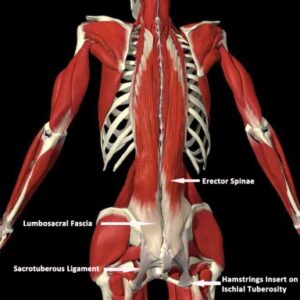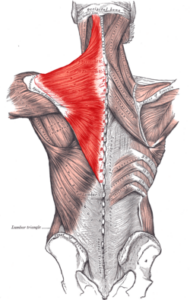Dean Somerset Interviews Me – Part 2
This is the second half of an interview I did for Dean Somerset’s website. In case you missed part 1, you can check it out HERE.
DS: What are the best supplements for the money, in your opinion?
EC: For most folks, fish oil, vitamin D, a decent low-carb protein powder, creatine, and a greens supplement (I prefer Athletic Greens) will get the job done. I’d add in probiotics for many people as well. The longer I’m in this field, the more of a minimalist I become.
DS: There are a lot of misconceptions and misinterpretations on core strength and core training out there. Some say you have to lay perfectly still and think happy thoughts while flexing your belly button, while other say you need to use stability balls to get anything, and other say heavy stuff on your shoulders does the trick. Also, the definition of where the core is and what it does seems to be either incomplete, or somewhat lacking in common sense, as most of the anatomical diagrams will show the core as a hollow vessel, and eliminate the internal organs from the picture. What do you consider to be important in the anatomy of the core, and what would be your go-to core training exercises?
EC: I tend to fall in the camp that it encompasses just about the entire body. We can all agree that the hamstrings probably deserve a place in the role of the core, since they attach to the pelvis via the ischial tuberosity and sacrotuberous ligament, right?
Well, those same hamstrings attach below the knee on both the tibia and fibula. They share a function (knee flexion) with the gastrocnemius, clearly are in close “fascial proximity,” and have neural innervations from the same origin at the lumbar spine (sciatic nerve). The gastrocnemious attaches on the calcaneus – so we’ve established “hip to foot” relationships of the “core.”
Add latissimus dorsi to the picture. It attaches to the iliac crest, thoracolumbar fascia, thoracic spine, ribs, scapula, and humerus. That would be a “hip to arm” connection, right?
Add in the trapezius, which runs from as far down as T12 to the base of the skull, and you can argue that you’ve got a “hip to head” relationship, too.
We’ll just train it with crunches, though, right???
I don’t think it’s as simple as just memorizing the anatomy of the muscles surrounding the lumbar spine; it’s about understanding the complex, functional relationship among all the muscles and their tendons, the ligaments, the fascia, the nerves, and the bony structures to which they attach. Things are more complex than we try to make them – which is probably why a lot of people have chronic back pain that goes misdiagnosed and mistreated.
While much of the industry has gone to the “don’t move the lumbar spine” end of the continuum, it’s really not that black and white. It – like any other body segment – should have some movement. The problem just becomes when we add load to that movement. And, more specifically, things get dangerous when we add load to the end range of that movement. Going into full lumbar flexion with an 800-pound deadlift isn’t going to make your intervertebral discs very happy, and not controlling violent extension and rotation during an athletic movement like swinging or throwing could very well leave you with a stress fracture, oblique strain, or spondylolisthesis at some point.
That said, there should be movement during daily activities; otherwise, we wouldn’t be able to tie our shoes, and my puppy wouldn’t be able to lick his unmentionables for twenty minutes every night before he falls asleep. When we start adding resistance, crazy velocity, and high volumes to the equation, though, we change the game.
To that end, I’ll continue to train anti-rotation and anti-extension exercises in the gym because the favorable outcomes we’ve seen with this approach have been tremendous. If it ain’t broken, don’t fix it.
DS: Chewing tobacco: help or hindrance??
EC: I’m probably not the best one to ask. I dipped once when I was about 18 and booted a few minutes later – and then felt miserably for about four hours afterward. It wasn’t one of my finer moments.
DS: I had a client who I was training for hockey a few years ago, and he forgot to go to the washroom for what I like to call a “pre-game.” During the middle of his heavy squats, while I was spotting him, he, well for a lack of better term, he “released,” and had to go change his shorts. Any training blooper highlight moments from CP?
EC: Honestly, there are too many to list! Most of them take place when our pro baseball guys are just shooting the breeze in the office. Throw in a British golfer, pro boxer, or Ironman competitor, and you get enough people from different walks of life to make any conversation memorable and absolutely hilarious. To that end, we actually have a quote book in the office; it’s got dozens of pages of stupid things that have been said over the past three years or so.
DS: Who is the bigger prankster, you or Tony?
EC: I’m not sure that I’d say that either of us are huge pranksters, but Tony is definitely the brunt of a lot more jokes at CP. We always joke that every 2-3 months, we have a “Tony Moment” where he learns about something and is absolutely blown away to find out that we had already known about it for months.
That said, the CP jester is definitely our pitching coordinator, Matt Blake, as some of these videos show:
DS: You have a lot of people looking up to you and aspiring to hit the level of professional success that you’ve been able to attain in a relatively short period of time. Who do you look up to so that you’re continuously motivated to push and achieve more?
EC: That is a tough question to answer because my goal has never been to “be” someone else. If I was to blindly follow someone else’s steps, it wouldn’t be the career I had in mind. So, I feel like if you are going to be successful in what you do, there has to be some degree of innate motivation in you.
That said, I look to a lot of people for inspiration.
My father owns his own business and that had a more profound impact on me than you could possibly imagine as I opened my own facility. Without even knowing it, he taught me that your business problems are your own and that you never make them anyone else’s problems. And, give your employees autonomy, and as long as you’ve picked the right people, they won’t let you down.
My mother is a high school teacher and administrator – and is pretty much the Mother Teresa of my hometown. Over the years, I’ve watched on numerous occasions as she has fed some of her students who couldn’t afford to eat. I’ve gone to the grocery store with her countless times – and it always takes an extra hour or so because she runs into so many grateful parents and students she’s dealt with over the years. She established the first International Baccalaureate (IB) curriculum in the state of Maine at her school. She didn’t have to do any of this; it wasn’t mandated by her salary, and it certainly isn’t something a lot of other teachers do. She taught me that your job has to fulfill you in some way far more significant than money, and that good will never runs out.
My grandparents were married for over 60 years before my grandfather passed away this fall. They taught me that family comes first – and my wife and I have had many talks about how they educated us on how a marriage should work.
In the industry, there are quite a few people I look to for advice. Alwyn Cosgrove has taught me a ton about how to run a business. Mike Robertson has been a guy with whom I’ve collaborated a lot – and we’ve both gotten better in the process. I look to guys like Bill Hartman and Charlie Weingroff as very bright individuals who simply enjoy learning for the sake of learning – and that’s something I enjoy. Pat Rigsby is a guy who has shown me more about how to balance all of life’s demands – from family time to various business endeavors.
I could go on and on, but the point is that I draw inspiration from a lot of sources – both intrinsic and extrinsic.
DS: You’ve stated that for baseball player, olympic lifting and vertical jumping aren’t really necessary as the sport doesn’t require it. Most trainers gave you hell, but you stood your ground and proved them all wrong. What other concepts have you brought to the table that have helped re-form many common misconceptions about training and sports development?
EC: It’s funny; right after I published that piece at T-nation about how power is “plane-specific,” I got an email from a researcher who was studying the exact same thing – and finding preliminary data that completely verified what I’d said. Sometimes, research is out there to validate what we’re already doing.
Whether I’ve made people changed their thought processes or not, a few things I’ve tried to bring to the forefront are:
1. The Difference Between Inefficiency and Pathology – We’ve always been taught that if an x-ray or MRI tells us that we’re structurally out of whack, then we’re screwed. The truth is that all of us – even when we’re asymptomatic – have structural issues on diagnostic imaging. The people who are in pain are the ones who don’t move efficiently on top of these structural flaws. I see this every day with the pitching shoulders that come through my door; I assume that they’re all “broken” and that we are just managing them to avoid them hitting a painful threshold.
2. The Concept of Long-Term Athletic Development Beginning with Strength – This is an area where I’ve tried to lead by example with our training model at Cressey Performance. I’m not interested in running a group of 20 14-year-olds through a bunch of agility ladders. If we want the best long term results and safety, our #1 job in a youth population is to improve strength. Sure, they run faster, jump higher, and throw harder – but they also decelerate better and change directions more efficiently. You can run all the “quickness drills” that you want with a young population, but the truth is that you’ll never improve speed or agility unless you teach them to put more force in to the ground. It’s like polishing the hub cabs on a car with no horsepower; you’re studying for the wrong test.
Unfortunately, there are a lot of facilities out there that are just about finding a training model that allows one to run a ton of kids through the same program without much concern for the actual benefits to be gained (or lack thereof). I’m not interested in babysitting.
3. The Differences Between Flexibility and Mobility – This was a key portion of my contribution to the recently released IYCA High School Strength Coach Certification. Mobility refers to the ability to reach certain positions, whereas flexibility refers to just one factor (joint range of motion) that affects that ability. Mobility is also dependent on stability, the foundation for which is neuromuscular recruitment. When we test flexibility, we’re talking about isolated testing of relaxed muscles/tendons. To be blunt, we’re ignoring the nervous system.
Mobility encompasses multiple joints and therefore likely involves fascial contributions to movement, whereas flexibility may only involve 1-2 joints and may therefore minimize the impact of fascia on an assessment.
Finally, and perhaps most importantly, we can easily assess mobility in a general sense – but determining the cause of limitations is more challenging. Flexibility, too, is a quick assessment – but correcting the limitation discovered doesn’t guarantee that movement quality will improve.
4. The belief that there is always something you can do to get better, regardless of injury – I’ve never been a fan of doctors and physical therapists telling injured patients to “just rest.” First off, rest alone is rarely the answer. Just as importantly, though, this recommendation ignores the fact that there are endocrine, immune, functional, psychological, and social benefits that are still to be derived from exercising. When I’m working with clients who are injured, I feel that it’s my job to show them what they can do and not just what they can’t do. And, there is always something you can do to maintain a training effect.
5. Weighted baseballs might actually be safer than traditional 5oz baseballs – and at the very least, they can be a beneficial training addition. This article sums it up quite well, so I won’t reinvent the wheel. A lot of people can’t believe it when I saw that we used weighted balls, but the results have been nothing short of fantastic.
These are just the few things that came to mind right off the top of my head. I’d like to think that there are more!
Sign-up Today for our FREE Newsletter and receive a deadlift technique tutorial!








